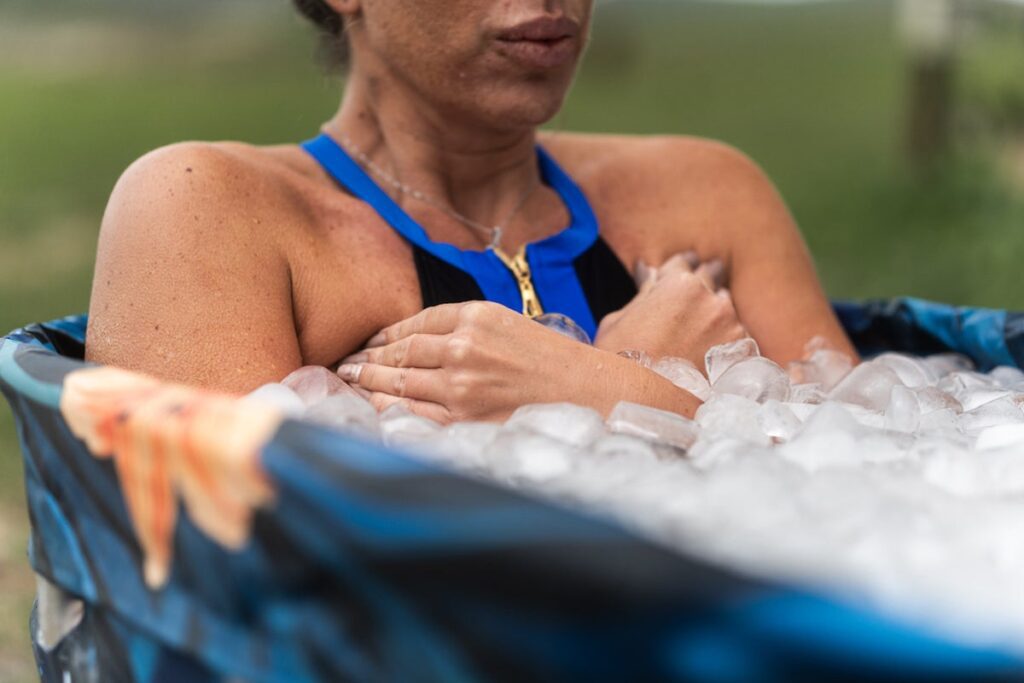Your contributions empower our storytelling
From issues surrounding reproductive rights to climate change and the influence of Big Tech, The Independent is dedicated to delivering timely news as stories unfold. Whether investigating the financials of political figures or showcasing our latest documentary “The A Word,” which highlights American women fighting for reproductive rights, we prioritize delivering factual information amidst various narratives.
At this pivotal juncture in U.S. history, having reporters on-site is crucial. Your support enables us to continue sending journalists to present comprehensive perspectives.
The Independent enjoys the trust of a diverse audience across the political spectrum. Unlike many other reputable news organizations, we don’t impose paywalls, believing that quality journalism should be accessible to all, funded by those who can afford it.
Your contributions truly make a difference.
Whether you jumpstart your morning by plunging into a bowl of ice water or immerse yourself in an icy bath, you’re part of the growing trend of cold therapy enthusiasts this year. Cold water swimming, cold plunges, and cryotherapy are integral components of the longevity movement, which aims to extend life and slow the aging process.
The biohacking community has celebrated the advantages of cold exposure for years, advocating it as a way to calm the nervous system and enhance energy levels. Advocates of ice baths assert that a frigid dip benefits metabolic function and mitochondrial efficiency.
Currently, the landscape of health and wellness is leaning towards colder therapies. New facilities that offer various methods of cold exposure are popping up throughout the UK. Recently, I spent three and a half minutes in a cryochamber—a challenging experience, but the resulting invigorating feeling was worth it.
Numerous studies back the benefits of cold exposure, yet there are also notable risks. Incidents of medical emergencies and fatalities have occurred related to ice baths and cold water swimming, particularly for individuals with heart conditions, who should avoid water temperatures below 27°C.
I’ve previously tried to avoid the ice bath trend. The sensation of submersion in frigid water triggers anxiety for me, lingering long after I’ve exited the water. Instead of experiencing the purported soothing effects, I feel tense and jittery—it hasn’t been a beneficial endeavor. It’s worth noting that some aspects of biohacking might be unnecessary; for instance, unless prescribed for recovery, there’s no need for everyone to use an oxygen chamber.
Moreover, there’s a significant gender research gap in many biohacking practices, including cold exposure. Most scientific studies focus on male biology, leaving the benefits and side effects for women underexplored.
“While many biohacking principles apply to all genders, hormonal differences, toxin storage, and metabolic variations require tailored approaches for women,” explains biohacking expert Kayla Barnes-Lentz. With a dedicated following on social media, she shares evidence-based health routines with women seeking reliable advice.
“Although ice baths can offer incredible benefits—from supporting the nervous system to alleviating inflammation—it’s crucial to consider female biology and the potential stress responses and fertility concerns cold water can induce,” she advises.
Barnes-Lentz’s insights question the simplistic portrayal of cold exposure as a cure-all suggested by health influencers. For women, various factors—including the menstrual cycle phase and nutritional status—should be evaluated before embarking on an ice bath experience.
Are ice baths beneficial for women?
Cold exposure prompts several physiological reactions in the body. Frequent and brief cold water immersions serve as powerful stimuli that make the body respond as though it is under threat,” notes women’s health and contrast therapy expert Jane Witt.
“Initially, cold receptors in the skin activate, stimulating the nervous system with a direct link to brown fat, which helps maintain body heat.”
Simultaneously, “submersion initiates the diving response and vagus nerve activation, engaging the sympathetic (fight or flight) nervous system, which raises blood pressure and heart rate while simultaneously activating the parasympathetic system, reducing heart rate. This creates a brief internal conflict known as ‘autonomous conflict,’ lasting under a minute.”
Witt suggests that while these overwhelming reactions can be managed through breathing techniques, it’s essential to control your breath. People often instinctively gasp and hyperventilate when faced with cold, but focusing on slow breathing helps mitigate the discomfort of the cold.
Danyl Bosomworth, founder of Brass Monkey ice bath company, asserts that while breathing exercises can reduce the anxiety of a cold plunge, several aspects of female physiology can alter the experience compared to men.
“Women’s bodies may direct blood flow toward core organs, leaving extremities feeling colder. They tend to start shivering sooner as a means of generating heat. With a generally higher body fat percentage, women are insulated, but they generate less heat. Also, women usually have a smaller surface area-to-volume ratio, which can lead to faster heat loss. Additionally, women possess a lower resting metabolic rate, resulting in less heat production,” he explains.
“Individual responses to cold vary widely depending on factors like clothing, activity level, and mental state. Hence, notice tailored approaches for women considering their age, fitness level, body composition, and any existing health conditions.”
Open image in gallery
Impact of ice baths on hormones
One of the most significant variables in this discussion is hormones. When immersed in cold water, the body releases increased levels of noradrenaline, adrenaline, and cortisol. “These hormones are naturally produced to grant the body energy for escape during stressful situations, activating the sympathetic nervous system,” explains Witt.
“Cold water immersion also boosts happiness hormones; dopamine can rise two and a half times within four hours post-exposure, leading to feelings of motivation and drive. Similarly, serotonin promotes mental balance and inner tranquility.”
Finally, oxytocin, the social and bonding hormone, is released during cold immersion. Brown fat possesses oxytocin receptors that activate during this exposure. The warm sensations often felt after cold water immersion can be attributed to brown fat and oxytocin production.
Considerations for hormonal balance
A hormonal shift caused by cold exposure affects numerous other hormones in the body. “While ice baths can provide remarkable benefits, they may also influence female hormonal balance,” warns Barnes-Lentz.
During the luteal phase of the menstrual cycle, excessive cold exposure can elevate cortisol levels, causing ‘progesterone steal,’ where cortisol negatively impacts progesterone levels. This can lead to irregular or missed periods, often exacerbated by high stress and anxiety levels.
Maintaining hormonal equilibrium is crucial for sleep, fertility, and mood stability, so consistently stressing the body, whether through cold exposure or other means, should be approached cautiously.
“Cold therapy promotes circulation, potentially aiding ovarian function, but timing is essential,” advises Barnes-Lentz. “I’d recommend using ice baths during the follicular phase while avoiding them during ovulation.”
As a user of cold plunges, she underscores the importance of proper timing for optimal hormonal support, suggesting a slightly warmer temperature around 12°C instead of freezing cold.
“Given that our nervous systems are often ‘under load,’ ice baths can feel more manageable on some days than others for everyone, making a mindful approach crucial for women,” Bosomworth concurs. “With personal factors such as perimenopause and monthly cycles to consider, the strain on the nervous system can increase significantly.”
You can train your body to endure cold exposure; however, longer or more frequent ice baths may not be suitable for everyone, depending on personal tolerance and adaptability. Pain sensitivity and responses to cold can fluctuate across different cycle phases; for instance, pain tends to be heightened during menstruation and less so during other times. If you are eager to explore the benefits of cold therapy, timing it during certain menstrual phases may enhance your experience.
Witt describes how “cold shock lasts for up to a minute before the parasympathetic nervous system takes over. The body must always respond, but adaptability comes with repeated exposure, and major benefits emerge after just a few cold immersions.”
The role of cold in recovery
Cold water therapy is well-established in its benefits—providing relief from joint and muscle aches, enhancing mood and mental fortitude, improving circulation, and promoting better sleep. Cold exposure is known to reduce inflammation, which is often the root cause of various pains.
“Women’s hormonal changes, particularly estrogen fluctuations, influence recovery and inflammation uniquely throughout their cycles. Therefore, both timing and intensity may need to be personalized to fully avail of the benefits,” Bosomworth explains.
“Women naturally experience enhanced vasodilation post-exercise, while cold plunges can rapidly redistribute blood without excessively constricting blood vessels, facilitating quicker recovery without diminishing strength gains. In contrast, men often experience strong vasoconstriction after workouts, and immediate cold exposure may inhibit muscle growth signals.”
Based on this understanding, cold immersion could be a more effective recovery method for women compared to men, explaining why many women experiencing menopause are turning to cold water swimming for symptom relief. Many women also seek out gyms and health clubs that provide cold plunge or ice bath experiences to complement their wellness routines.
The natural oxytocin release during cold exposure also fosters community—it’s common to see groups forming around cold water swimming events. “The release of hormones during the cold shock response not only protects against hypothermia but significantly enhances mental well-being. The endorphin surge post-exposure produces an immediate sensation of joy and pain relief,” notes Witt.
“A harmonious balance of hormones, stress alleviation, and the potential for a metabolic boost are immensely beneficial,” Bosomworth adds. “Furthermore, creating a community where women feel comfortable exploring these practices without judgment is essential. It should be about finding what resonates personally—integrating it into a holistic journey toward well-being is what truly matters.”


